#dunhuang style
Text




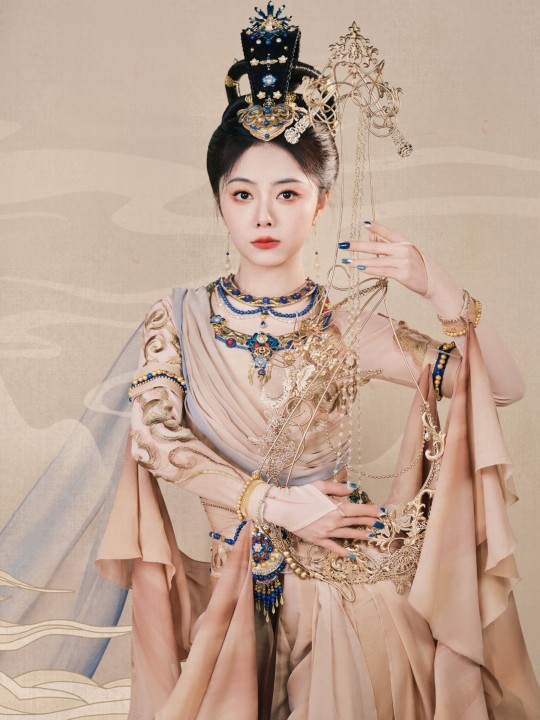




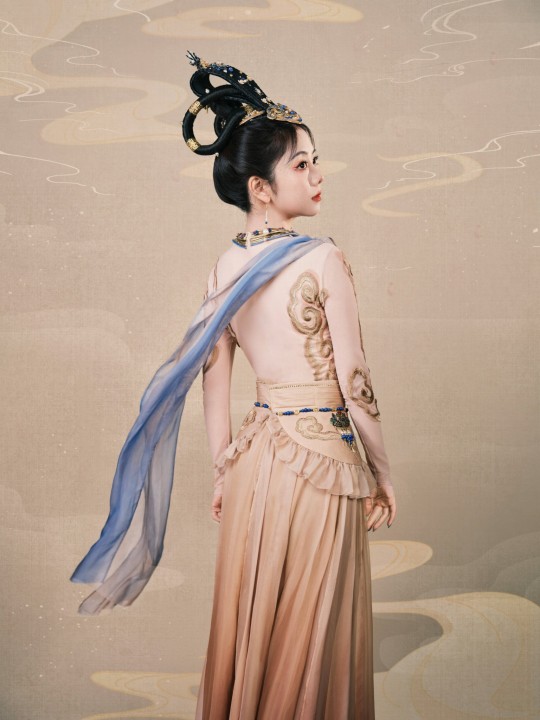
TAN SONGYUN 谭松韵 in a dunhuang photoshoot | 2024 Spring Festival Gala — Hunan TV
Tan Songyun: more photos here
2024 Spring Festival Gala: more photos here
dunhuang photoshoot: more photos here
#tan songyun#谭松韵#chinese actress#chinese fashion#fashion#dunhuang photoshoot#dunhuang#spring festival gala 2024#cnladies#spring festival#spring festival gala#year of the dragon#dunhuang style#hanfu#hanfu photoshoot#chinese hanfu#hanfu girl#hanfu fashion
127 notes
·
View notes
Photo




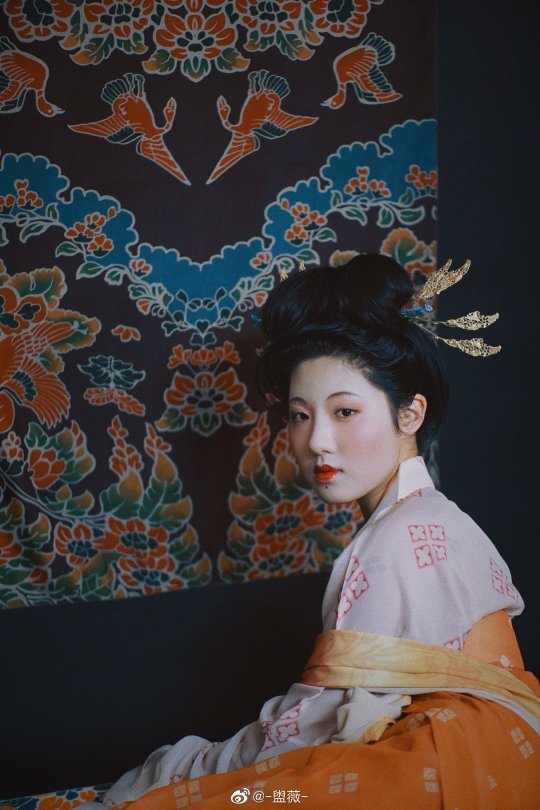

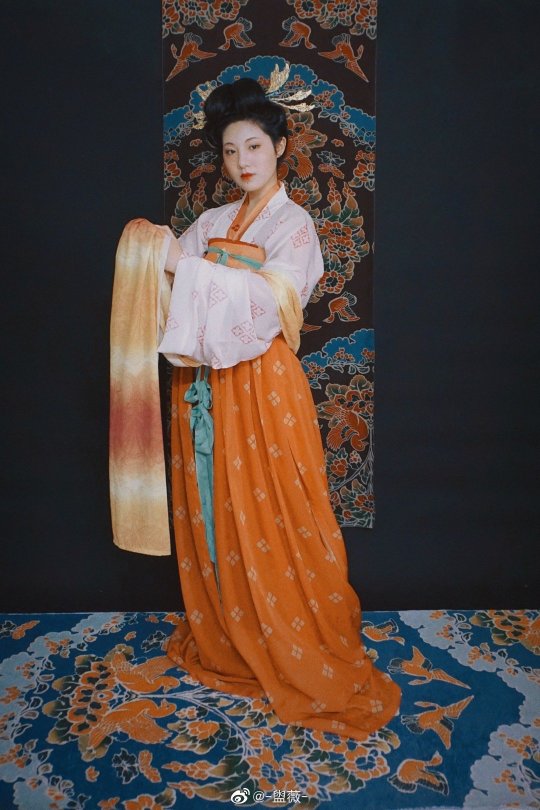
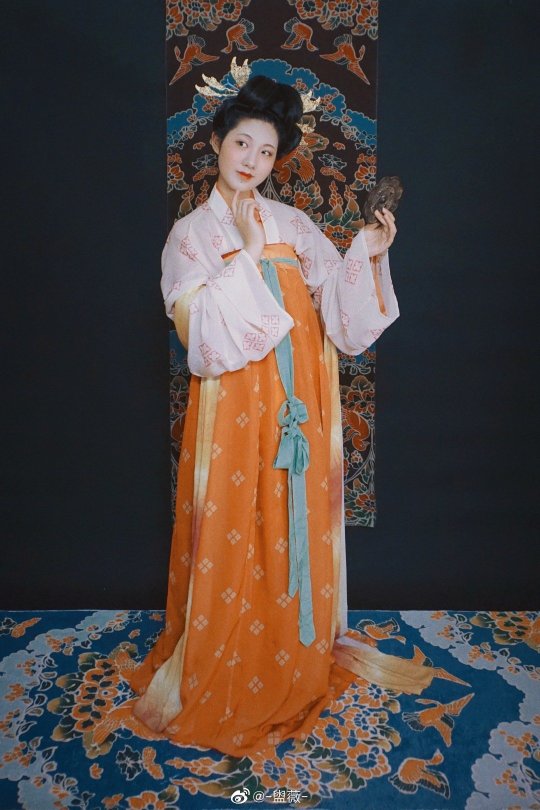


【Hairstyle Reference Artifacts】
Tang Dynasty Female Figurines & Dunhuang Mogao Grottoes Cave 231,Parents of Yin Chu Shi

[Hanfu · 漢服]China Tang Dynasty Chinese Traditional Clothing Hanfu & Hairstyle Photoshoots
Women's Clothing and Hairstyles in the Mid-Tang Peirod
_______
📸Photo & Model:@-盥薇-
Carpet : @暮秋山行传统服饰
🔗Weibo:https://weibo.com/3942003133/MdkLBwX86
_______
#Chinese Hanfu#Tang Dynasty#Hanfu#hanfu hairstyle#hanfu history#hanfu accessories#chinese traditional clothing#chinese historical fashion#chinese coustume#chinese culture#chinese ar#chinese history#Dunhuang Mogao Grottoes Cave 231Parents of Yin Chu Shi#-盥薇-#暮秋山行传统服饰#漢服#汉服#Chinese Style
203 notes
·
View notes
Text
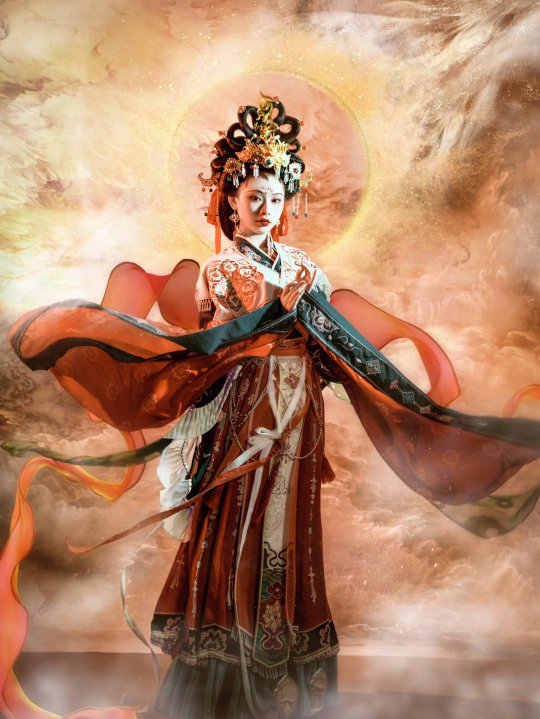
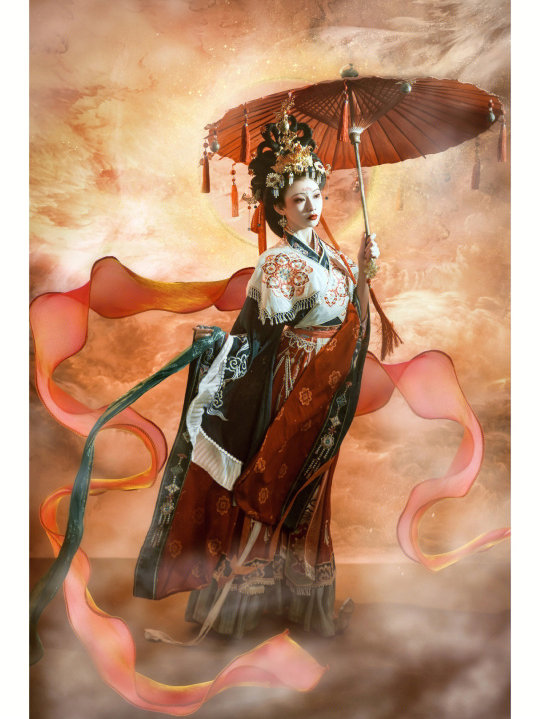
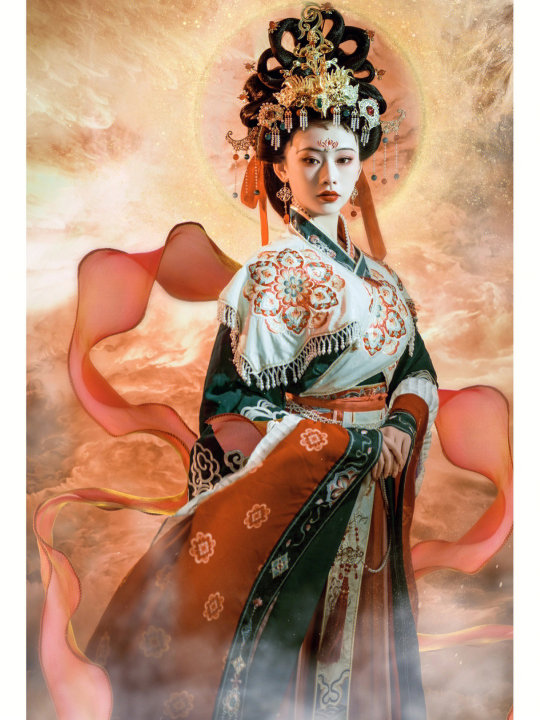

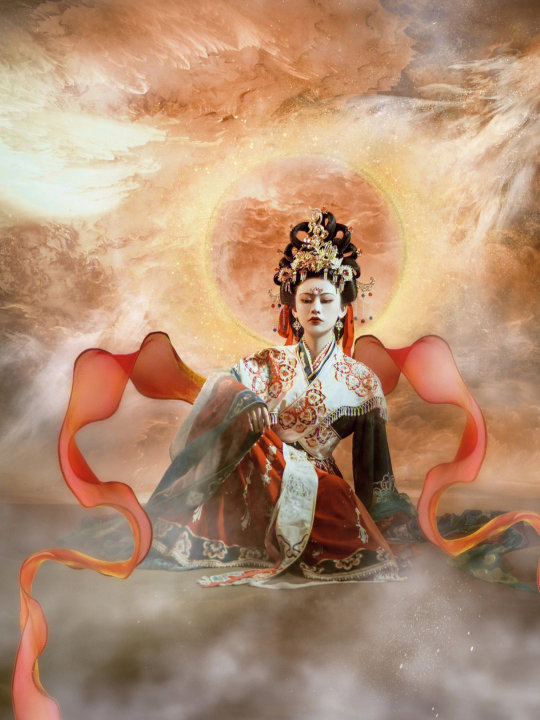
Dunhuang Fairy look
Ancient fresco inspiration
225 notes
·
View notes
Text
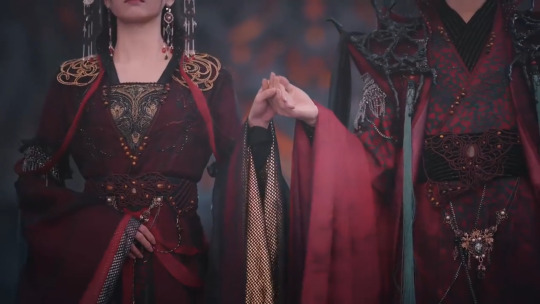
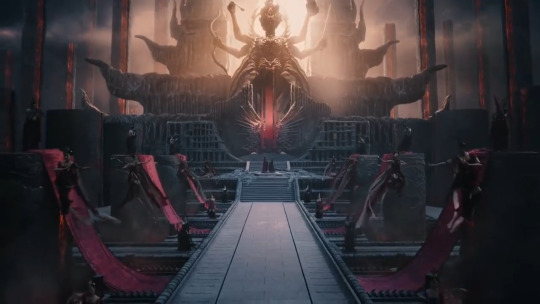
The goth wedding of the century
#Till the End of the Moon#she took his hand - she didn't do that in the mortal wedding#love that this is basically the devil version of Ming Ye and Sang Jiu's wedding#hoping for a comparison of the dancers and musicians in the both weddings pls gif people (ㅅ´ ˘ `)♡#devilized Dunhuang style like whoa#excuse my bad quality screenshots#episode 39#spoiler
57 notes
·
View notes
Text

SPPPIIIINNNNIIINNNGGG Nikki
#shining nikki#nikkiverse#shining nikki styling#my styling#sn styling#sn nikki#love nikki#spinning#dunhuang#sn comp
45 notes
·
View notes
Text
youtube
Oriental style beauties,Jiutian Xuannü,Dunhuang.
2 notes
·
View notes
Text
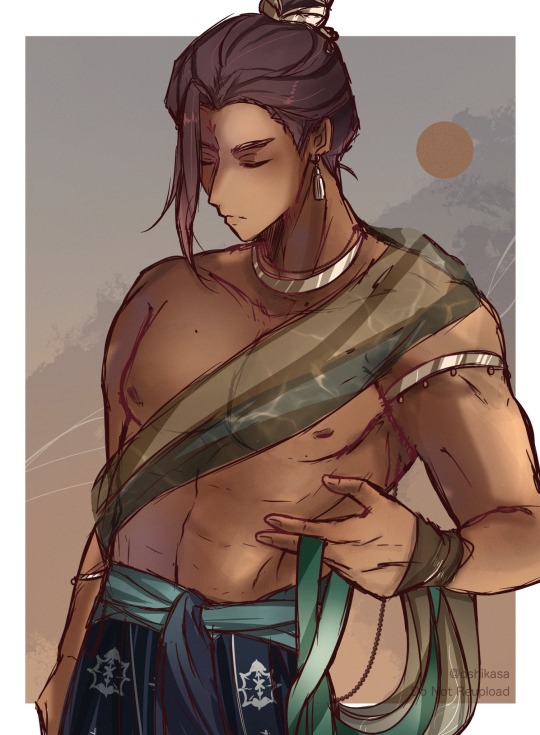



fengqing in feitian (dunhuang mural) style! 🏹🗡️
the models in these reference photos are so lovely.. i was inspired by ppl saying feng xin suited the man in green, and wanted to do a paired mu qing as well!
i have another set of references that i would love to draw hualian in
1K notes
·
View notes
Note
Please can you explain the difference of meaning between hanfu and huafu ? Sorry if you already got the question
Hi, thanks for the question, and sorry for taking ages to reply! (hanfu photo via)
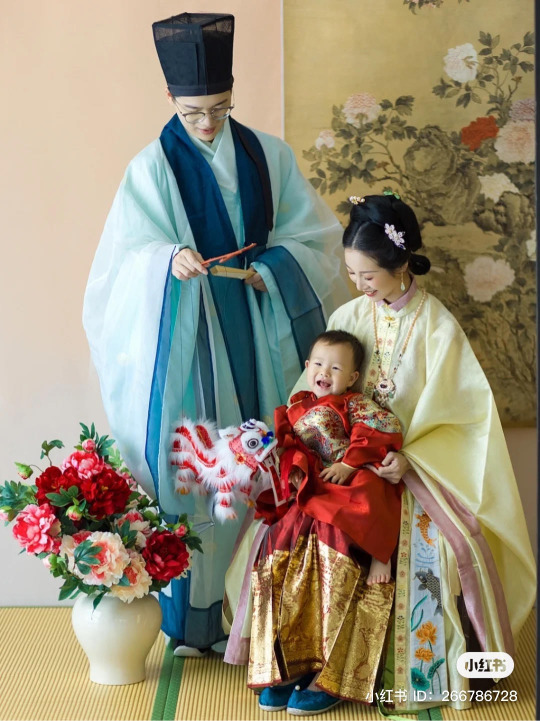
The term “hanfu” (traditional Chinese: 漢服, simplified Chinese: 汉服) literally means “Han clothing”, and refers to the traditional clothing of the Han Chinese people. “Han” (漢/汉) here refers to the Han Chinese ethnic group (not the Han dynasty), and “fu” (服) means “clothing”. As I explained in this post, the modern meaning of “hanfu” is defined by the hanfu revival movement and community. As such, there is a lot of gatekeeping by the community around what is or isn’t hanfu (based on historical circumstances, cultural influences, tailoring & construction, etc). This isn’t a bad thing - in fact, I think gatekeeping to a certain extent is helpful and necessary when it comes to reviving and defining historical/traditional clothing. However, this also led to the need for a similarly short, catchy term that would include all Chinese clothing that didn’t fit the modern definition of hanfu -- enter huafu.
The term “huafu” (traditional Chinese: 華服, simplified Chinese: 华服) as it is used today has a broader definition than hanfu. “Hua” (華/华) refers to the Chinese people (中华民族/zhonghua minzu), and again “fu” (服) means “clothing”. It is an umbrella term for all clothing that is related to Chinese history and/or culture. Thus all hanfu is huafu, but not all huafu is hanfu. Below are examples of Chinese clothing that are generally not considered hanfu by the hanfu community for various reasons, but are considered huafu:
1. Most fashions that originated during the Qing dynasty (1644–1911), especially late Qing, including the Qing aoqun & aoku for women, and the Qing changshan and magua for men. I wrote about whether Qing dynasty clothing can be considered hanfu here. Tangzhuang, which is an updated form of the Qing magua popularized in 2001, can also fit into this category. Below - garments in the style of Han women’s clothing during the Qing dynasty (清汉女装) from 秦綿衣莊 (1, 2).
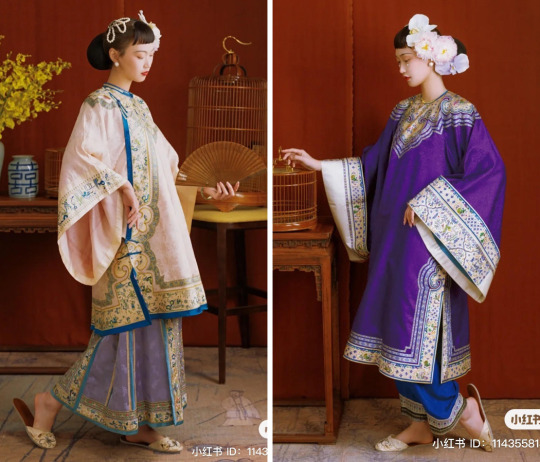
2. Fashions that originated during the Republican era/minguo (1912-1949), including the minguo aoqun & aoku and qipao/cheongsam for women, and the minguo changshan for men (the male equivalent of the women’s qipao). I wrote about why qipao isn’t considered hanfu here. Below - minguo aoqun (left) & qipao (right) from 嬉姷.

Below - Xiangsheng (crosstalk) performers Zhang Yunlei (left) & Guo Qilin (right) in minguo-style men’s changshan (x). Changshan is also known as changpao and dagua.
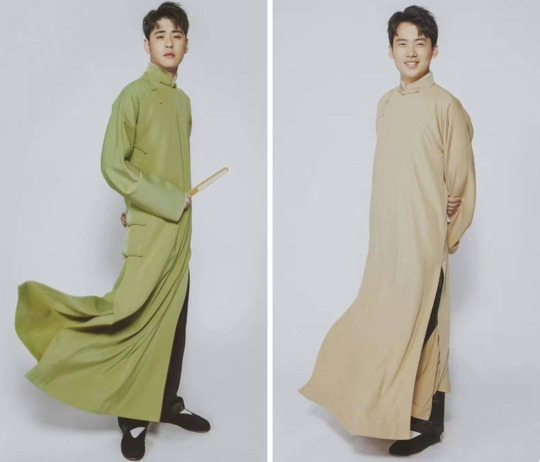
3. Qungua/裙褂 and xiuhefu/秀禾服, two types of Chinese wedding garments for brides that are commonly worn today. Qungua originated in the 18th century during the Qing dynasty, and xiuhefu is a modern recreation of Qing wedding dress popularized in 2001 (x). Below - left: qungua (x), right: xiuhefu (x).
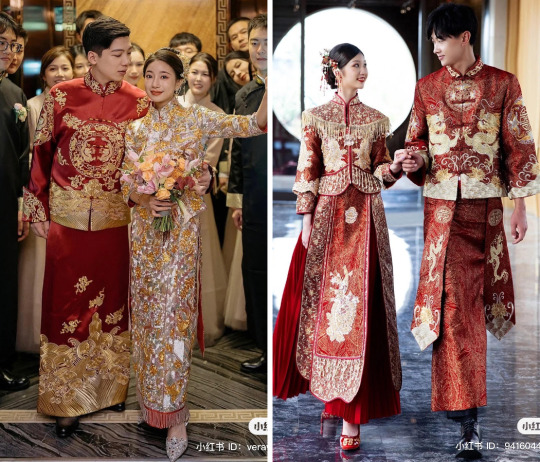
4. Modified hanfu (改良汉服/gailiang hanfu) and hanyuansu/汉元素 (hanfu-inspired fashion), which do not fit in the orthodox view of hanfu. Hanfu mixed with sartorial elements of other cultures also fit into this category (e.g. hanfu lolita). From the very start of the hanfu movement, there’s been debate between hanfu “traditionalists” and “reformists”, with most members being somewhere in the middle, and this discussion continues today. Below - hanyuansu outfits from 川黛 (left) and 远山乔 (right).

5. Performance costumes, such as Chinese opera costumes (戏服/xifu) and Chinese dance costumes. These costumes may or may not be considered hanfu depending on the specific style. Dance costumes, in particular, may have non-traditional alterations to make the garment easier to dance in. Dunhuang-style feitian (apsara) costumes, which I wrote about here, can also fit into this category. Below - left: Chinese opera costume (x), right: Chinese dance costume (x).
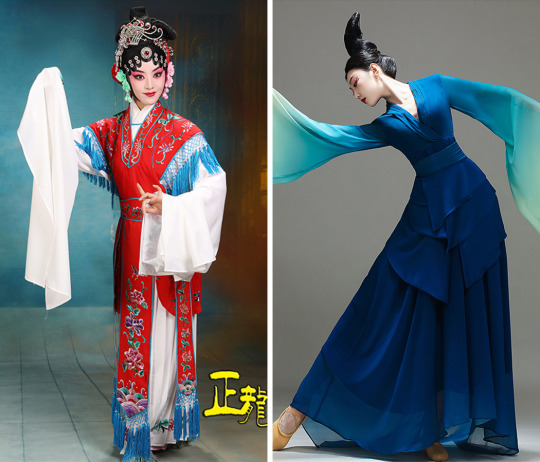
6. Period drama costumes and fantasy costumes in popular media (live-action & animation, games, etc.), commonly referred to as guzhuang/古装 (lit. “ancient costumes”). Chinese period drama costumes are of course based on hanfu, and may be considered hanfu if they are historically accurate enough. However, as I wrote about here, a lot of the time there are stylistic inaccuracies (some accidental, some intentional) that have become popularized and standardized over time (though this does seem to be improving in recent years). This is especially prevalent in the wuxia and xianxia genres. Similarly, animated shows & games often have characters dressed in “fantasy hanfu” that are essentially hanfu with stylistic modifications. Below - left: Princess Taiping in historical cdrama 大明宫词/Palace of Desire (x), right: Wei Wuxian and Lan Wangji in wuxia/xianxia cdrama 陈情令/The Untamed (x).

7. Any clothing in general that purposefully utilizes Chinese style elements (embroidery, fabrics, patterns, motifs, etc). Chinese fashion brand Heaven Gaia is a well-known example of this. Below - Chinese-inspired designs by Heaven Gaia (x).
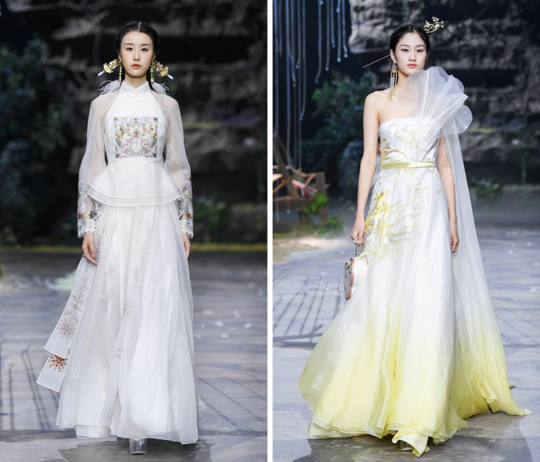
8. Technically, the clothing of China’s ethnic minorities also fit under the broad definition of huafu, but it’s rarely ever used in this way.
From personal observation, the term “huafu” is mainly used in the following situations:
1. Some large-scale events to promote Chinese clothing, such as the annual “华服日/Huafu Day”, will use “huafu” in their name for inclusivity.
2. For the same reason as above, Chinese clothing including hanfu will often be referred to as “huafu” on network television programs (ex: variety shows).
3. A few Chinese clothing shops on Taobao use “huafu” in their shop name. Two examples:
明镜华服/Mingjing Huafu - sells hanfu & hanyuansu.
花神妙华服/Huashenmiao Huafu - sells Qing dynasty-style clothing.
With the exception of the above, “huafu” is still very rarely used, especially compared to “hanfu”. It has such a broad definition that it’s just not needed in situations for which a more precise term already exists. However, I do think it’s useful as a short catch-all term for Chinese clothing that isn’t limited to the currently accepted definition of hanfu.
If anyone wants to add on or correct something, please feel free to do so! ^^
Hope this helps!
#happy 2023!#hanfu#huafu#terminology#language#hanfu movement#history#reference#ask#reply#>1000#chinese fashion#chinese culture#china
2K notes
·
View notes
Text




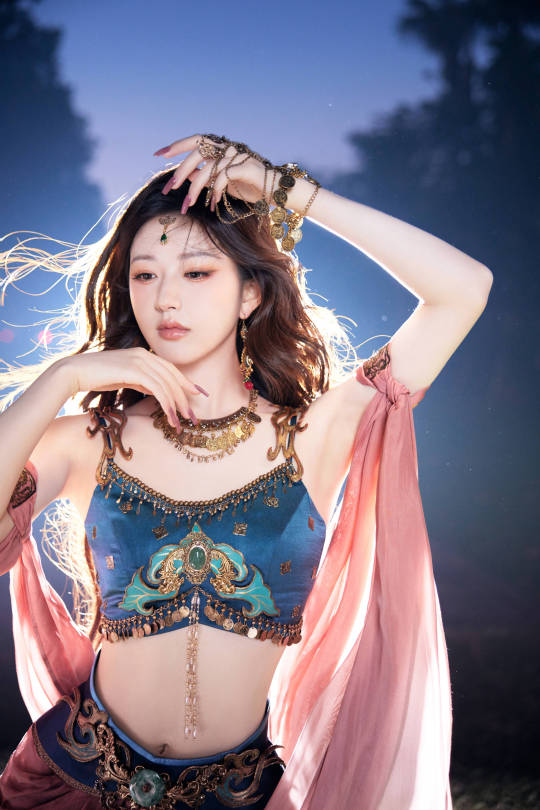

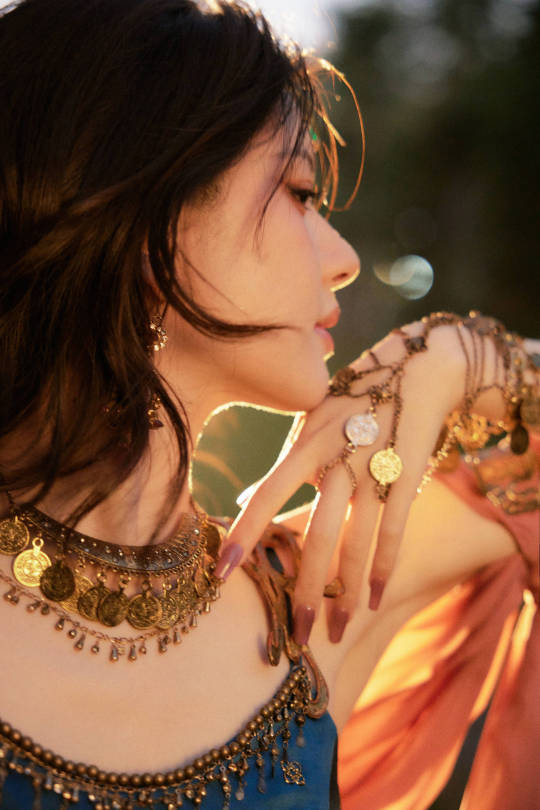

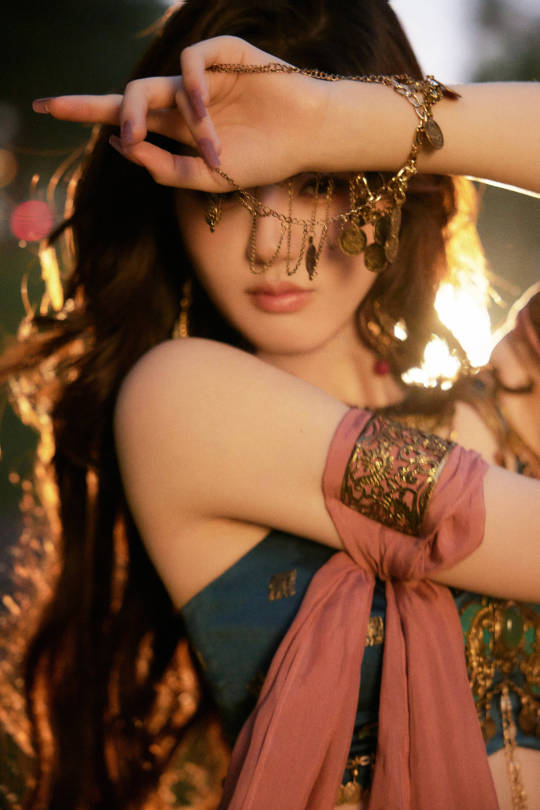
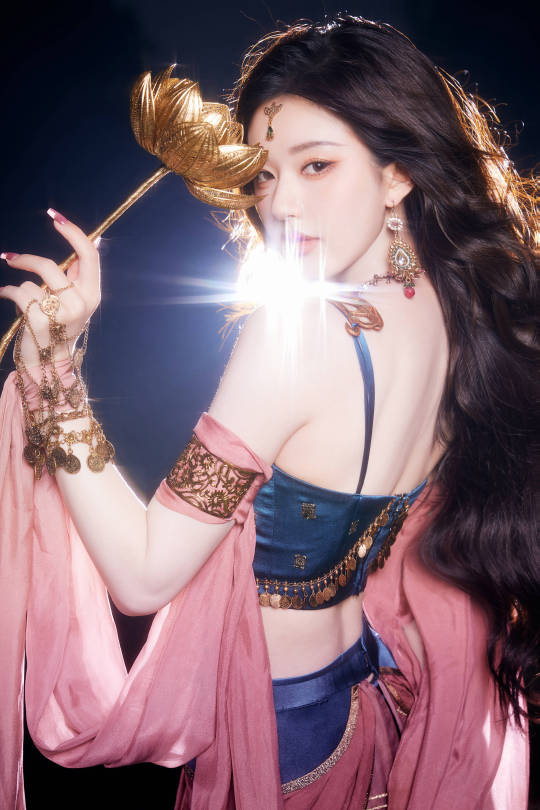
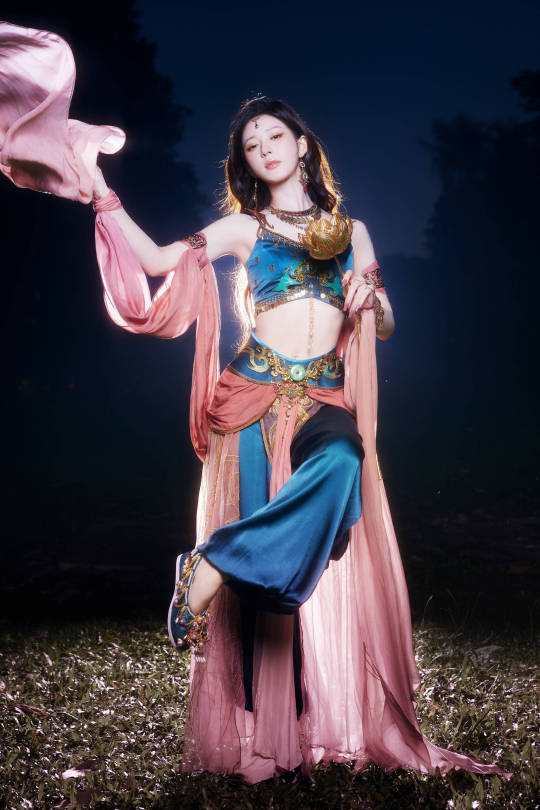

ZHAO LUSI 赵露思 in dunhuang photoshoot 『 LOOK2 』 | 2024 NYE Gala — Hunan TV
Zhao Lusi: more photos here
2024 NYE Gala: more photos here
dunhuang photoshoot: more photos here
#zhao lusi#rosy zhao#赵露思#chinese actress#chinese fashion#fashion#cnladies#New Year 2024#New Year's Eve Gala#NYE Gala#dunhuang photoshoot#dunhuang#dunhuang style#2024 NYE Gala
58 notes
·
View notes
Text
I’ve been stricken with numerous personal life circumstances that have made it difficult to produce solid research pieces as well as answer questions, but I still want to share information.
This type of dance is called Dunhuang and mixes traditional ethnic dancing styles with modern art. The style of the dance itself is influenced heavily by Buddhism. Specific body movements are inspired by fresco paintings found inside the caves of the west China province of Gansu. The dance style owes it’s name to the musical scores found within the city of Dunhuang.
Dunhuang itself used to be a massive center for Buddhist teaching and practices between 500AD-1000AD, being home to several monasteries during that time period. Pilgrims from China, India and Tibet would congregate here leaving behind massive amounts of Buddhist written text and art that would form the strongest body of primary works regarding Buddhist communities in China.
This group here is performing The Thousand Handed Guanyin, and actually happen to be hearing impaired! It’s actually quite mesmerizing to watch.
191 notes
·
View notes
Photo
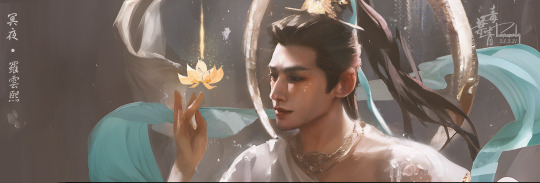
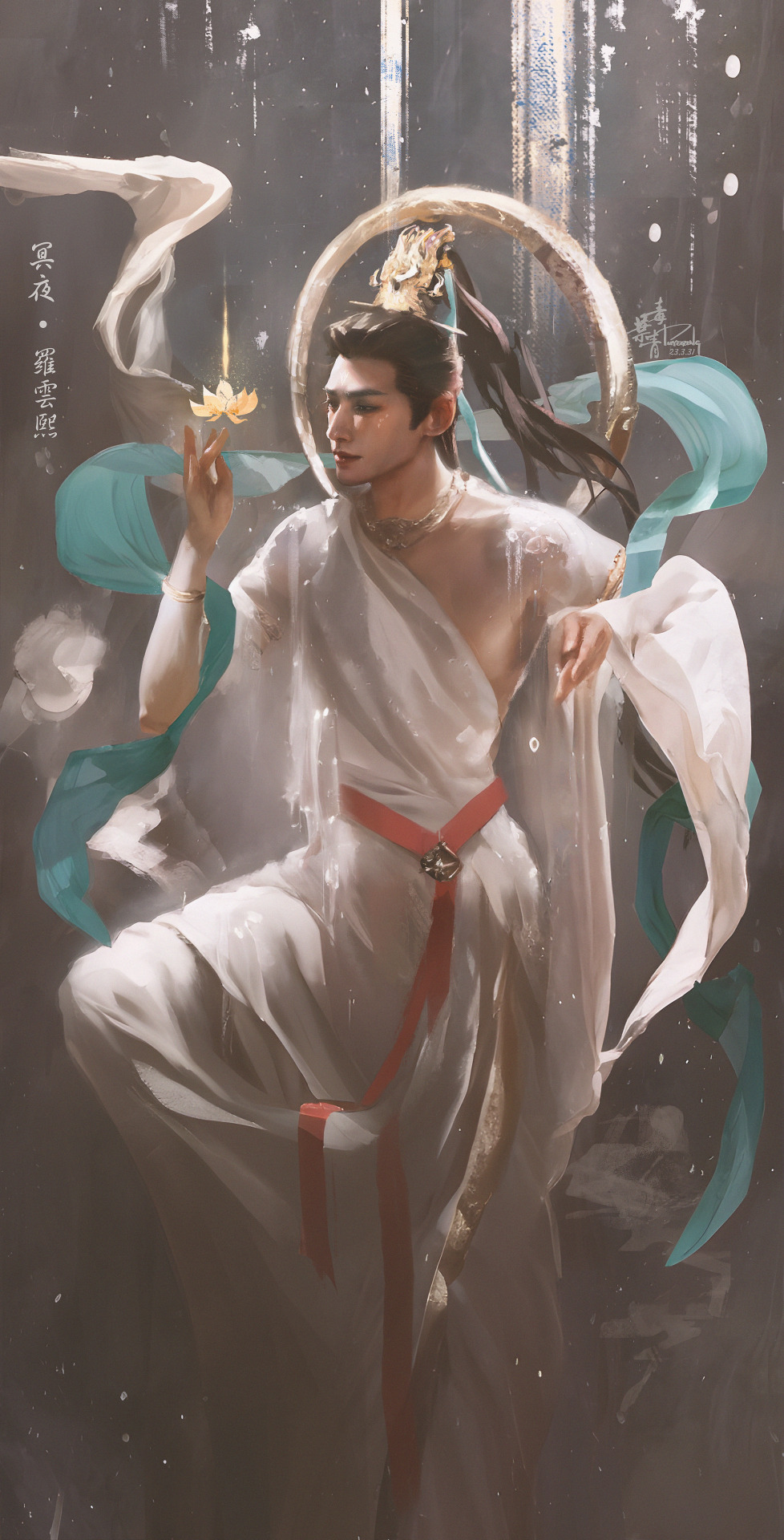
my art for Luoyunxi’s Mingye from Till the end of the moon.
罗云熙 长月烬明 冥夜
reimagined in dunhuang style.
do not steal, no secondary edit, no for profit use.
754 notes
·
View notes
Text
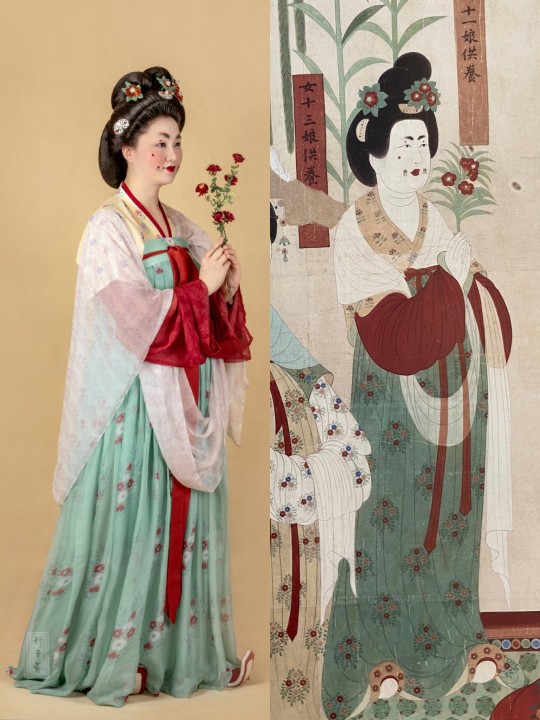


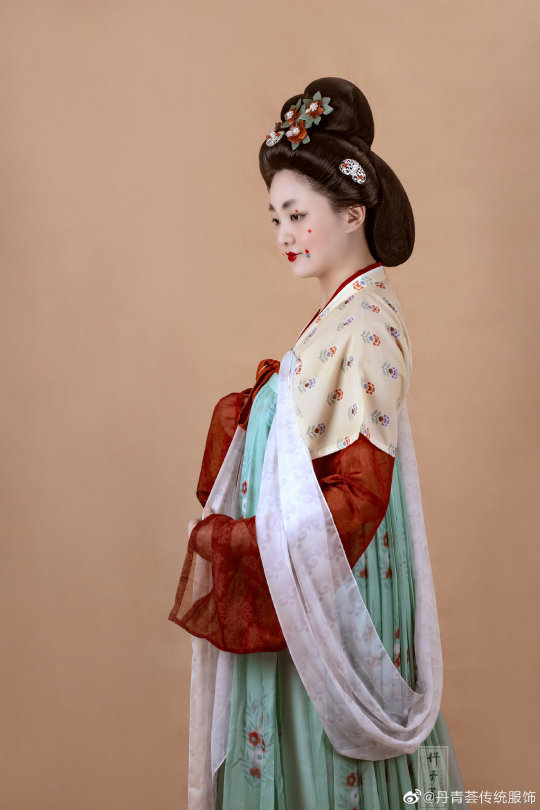
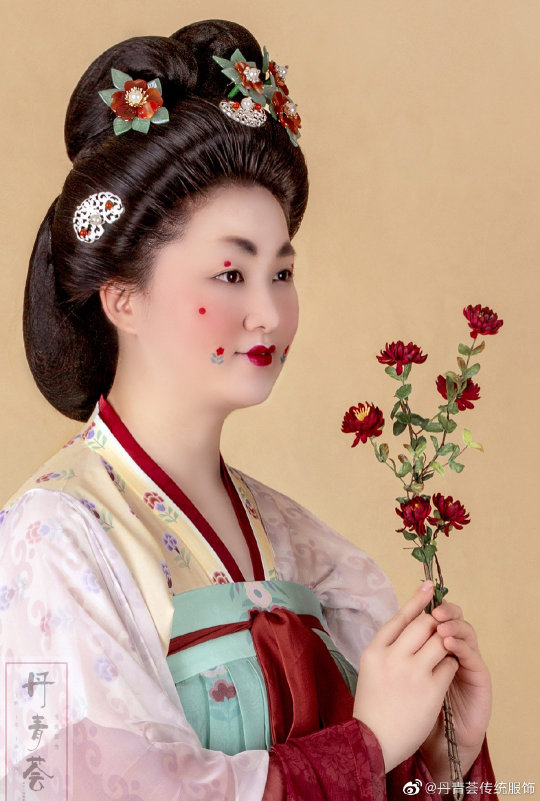

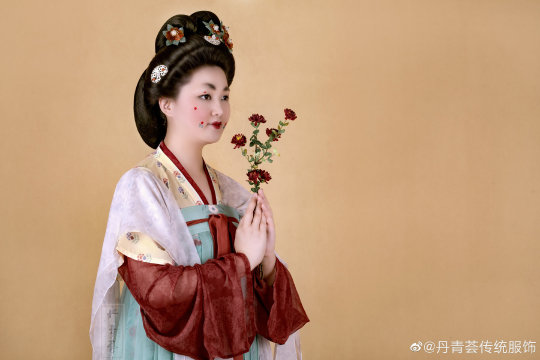
【Reference Artifacts】
China Tang Dynasty Dunhuang Mural:
《都督夫人太原王氏礼佛图/Governor Wife Mrs.Wang and her daughters and servants in Cave 130 of Mogao Grottoes in Dunhuang》


[Hanfu · 漢服]Chinese Tang Dynasty Traditional Clothing Hanfu Recreation Based On Tang Dynasty Dunhuang Mural
_________________
Recreation Work:@丹青荟传统服饰
🔗Weibo:
_________________
#chinese hanfu#tang dynasty#hanfu#hanfu accessories#hanfu_challenge#hanfu history#hanfu art#chinese traditional clothing#china#chinese costume history#chinese historical fashion#chinese culture#historical fashion#chinese style#漢服#汉服#中華風#丹青荟传统服饰#都督夫人太原王氏礼佛图#Governor Wife Mrs.Wang and her daughters and servants in Cave 130 of Mogao Grottoes in Dunhuang
156 notes
·
View notes
Text

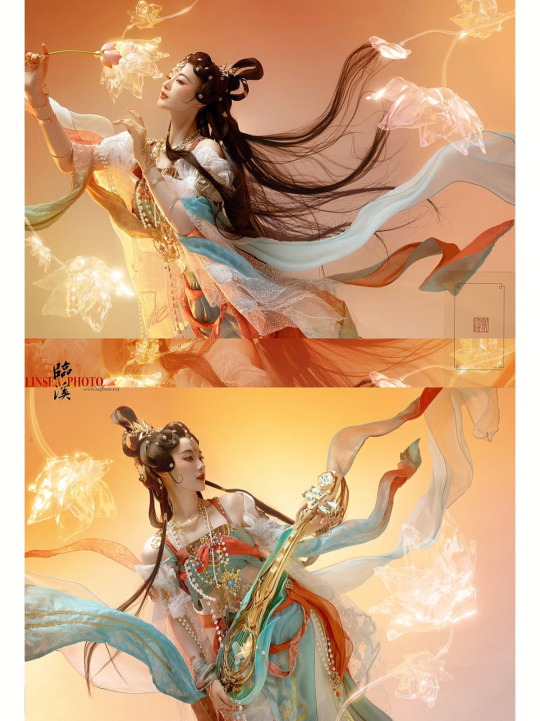

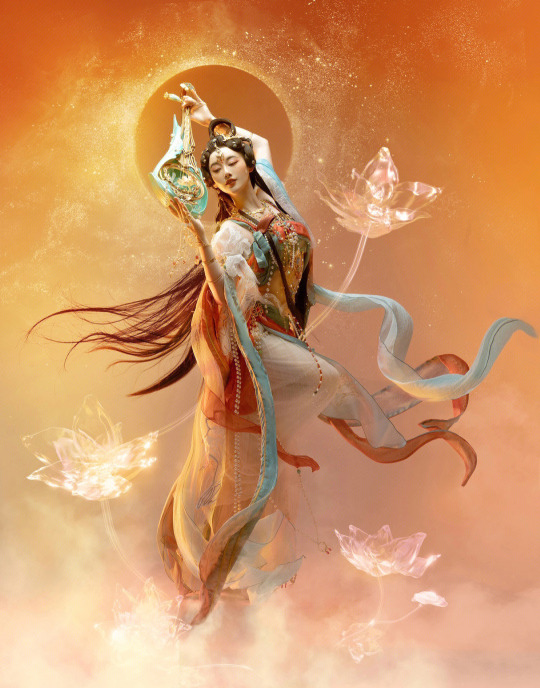

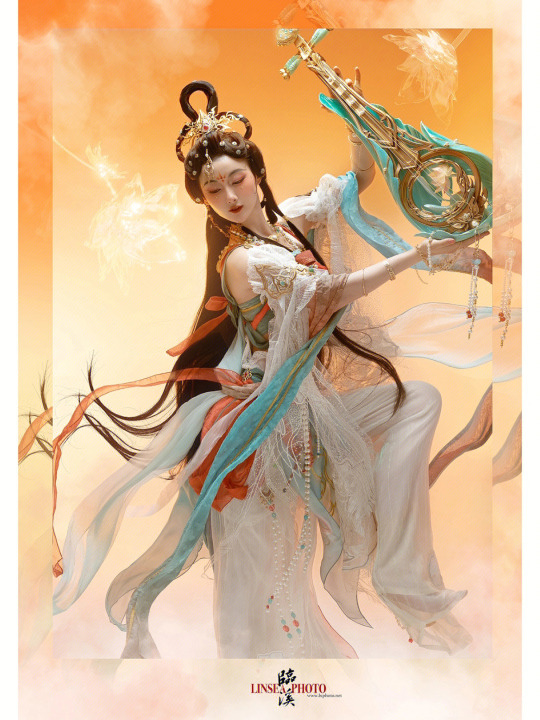
Dunhuang Style Photography
Qian Nv You Hun Online x Longmen Grottoes Research Institute
Works from Linxi Photography Studio
330 notes
·
View notes
Text
TTEOTM Easter Eggs Part 3 - Costume and Makeup Details
I love beautiful costumes, but even more when they tell a story! Here are a few of my observations. Did you spot anything else? (Spoilers!)
(1) The two outfits Ye Xiwu gifted Tantai Jin are both quilted. The purple costume is particularly unusual in that it's constructed like a blanket. In contrast, all his clothing in the hostage prince arc are not quite thick enough for Sheng kingdom's harsh winters. Ye Xiwu is literally bringing warmth to his life.
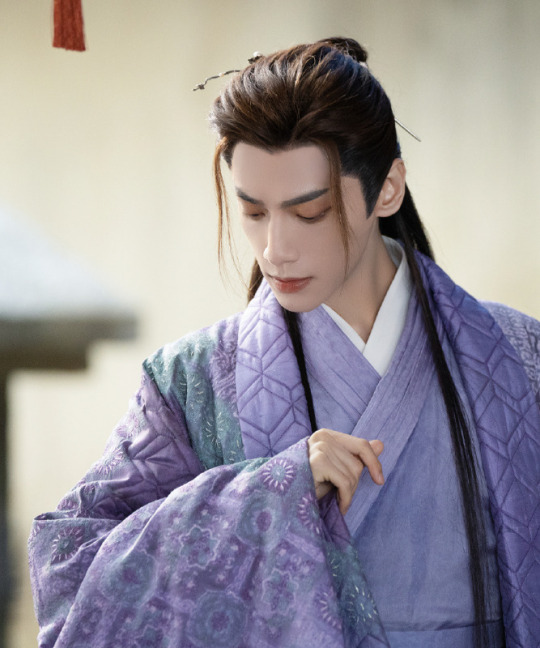

(2) TTJ and YXW wear similar costumes in their two love scenes - (1) Ep 2 - YXW's imagination of the drugged affair which led to their marriage and (2) Ep 39, where they finally consummated their marriage on screen. YXW wears the same pink costume. TTJ in different but identical-looking mustard yellow costumes.

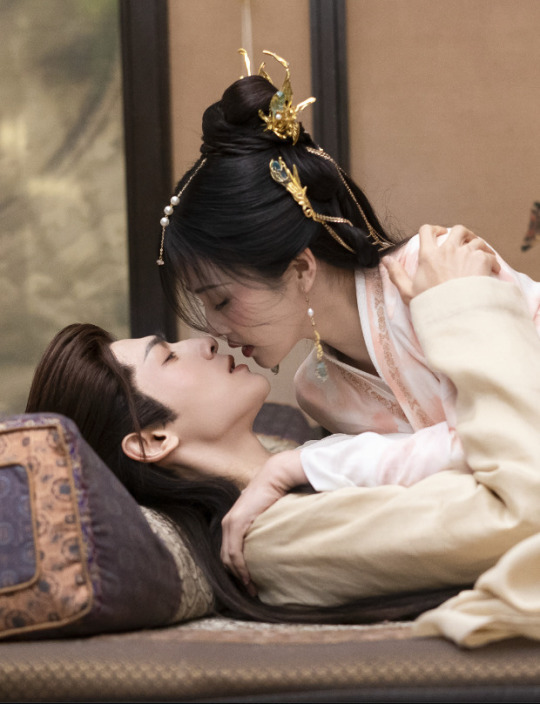
(3) Some viewers have criticized Ye Xiwu for not taking off hair accessories before going to bed, chalking it up to lazy filmmaking. This is not necessarily the case. In ancient China, upper class women did sleep with their hair-do and manage to keep elaborate designs in tack. How? By resting her neck, not her head, on the pillow.
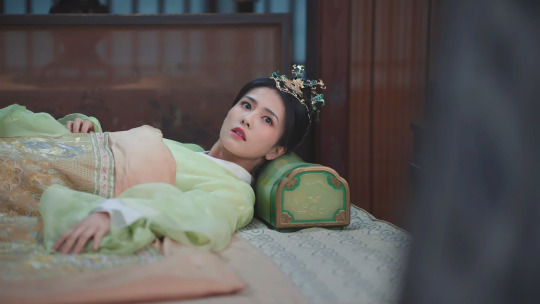
Ye Xiwu / Li Susu does go without hair accessories in a few occasions: when she is traveling, ill, depressed, and in mourning. It is most likely a creative choice to create a contrast between moments where her character is in control and powerful vs. vulnerable.
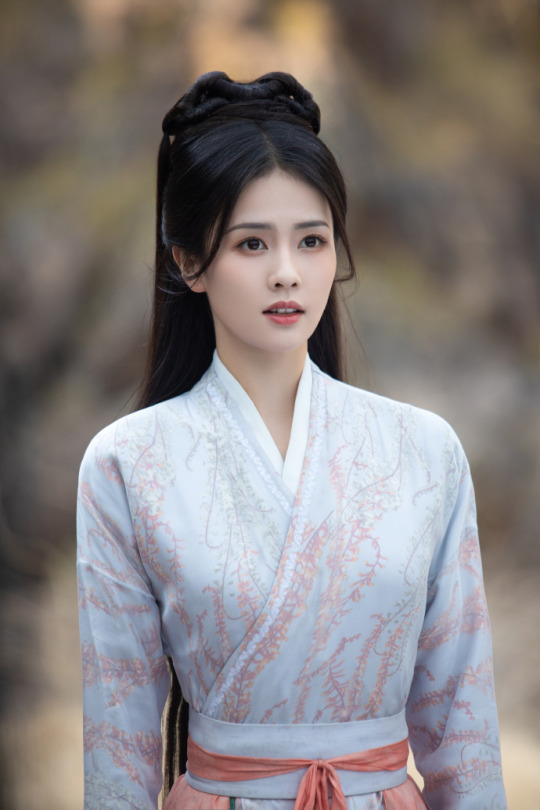


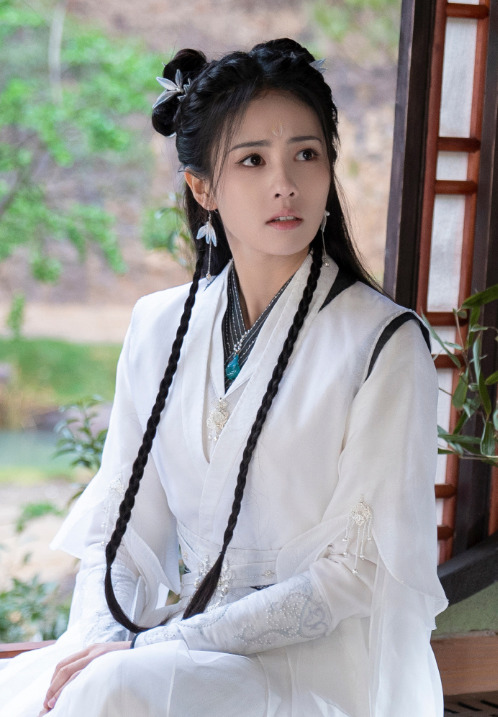
(4) All of Tantai Jin's female lieutenants wear red, from Pianran (after she starts working for him) to Siying and Monu. In fact, so does Tantai Minglang's lieutenant Fuyu. Red appears to be the career woman's color in this world!




(5) After Mingye falls in love with Sangjiu, he adds the red waist scarf belt that's part of his wedding dress on top of his normally blue outfit.

(6) The costume that Cang Jiumin (left) wears when refining the Dragonheart Shield echoes Mingye's costume (right) through the red/blue colors and collar design, reinforcing the connection between the two characters.
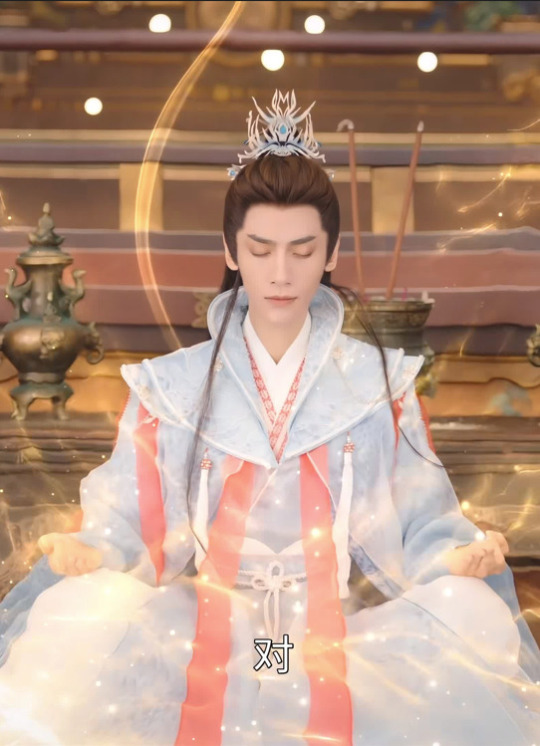

(7) The costumes in Bo're dream hint at the characters' true forms:
Mingye (dragon): dragonscale armour & patterned clothing
Sangjiu & Sangyou (clams): pearls & shell motifs
Tianhuan (snake): gold serpent hair crown & bracelets
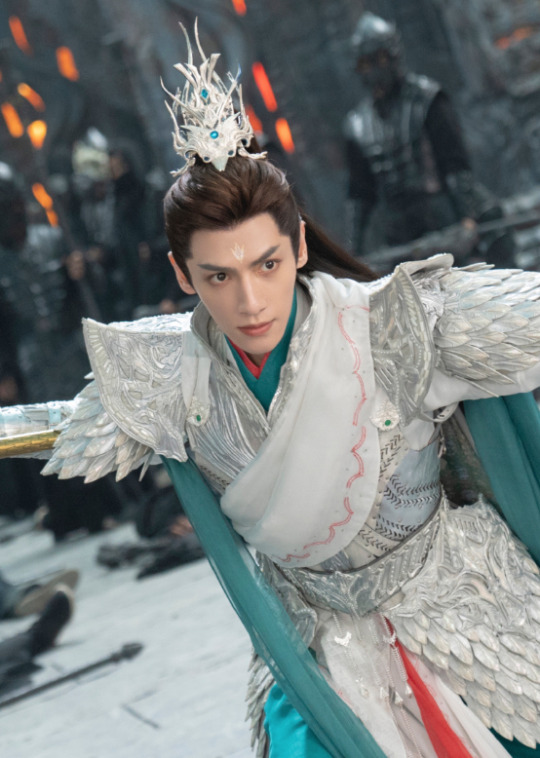


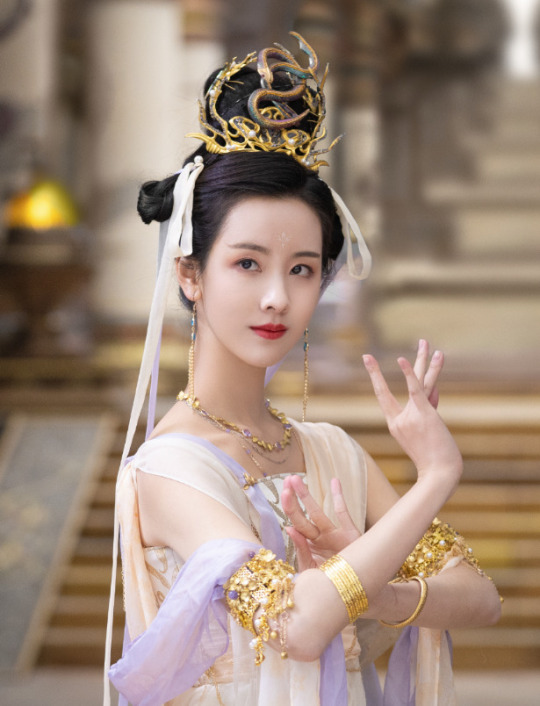
(8) Throughout the drama, only characters in the Upper Immortal Realm go full Dunhuang Feitian style, characterized by bandeaus, scarves, layers of drapery, sleeveless (similar to Indian clothing).

The style is used in formal occasions or to confer power or godliness. For example, Sangjiu goes Dunhuang with sleeveless draping outfits at her wedding and after she goes dark.
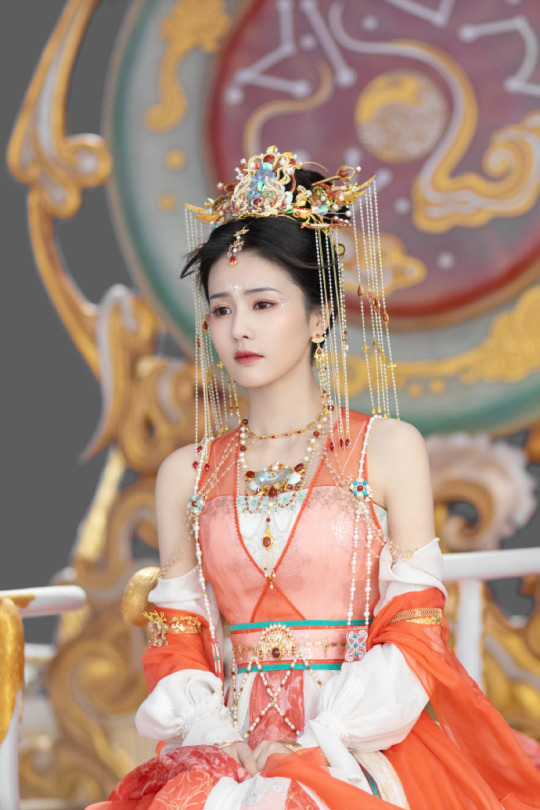

Similarly, when Susu and Tantai Jin become gods at the finale, they also take on a new Dunhuang-style outfit. In fact, the multi-color drapery of Tantai Jin's outfit seem to be an amalgamation of the fabric used in the twelve gods' outfits.

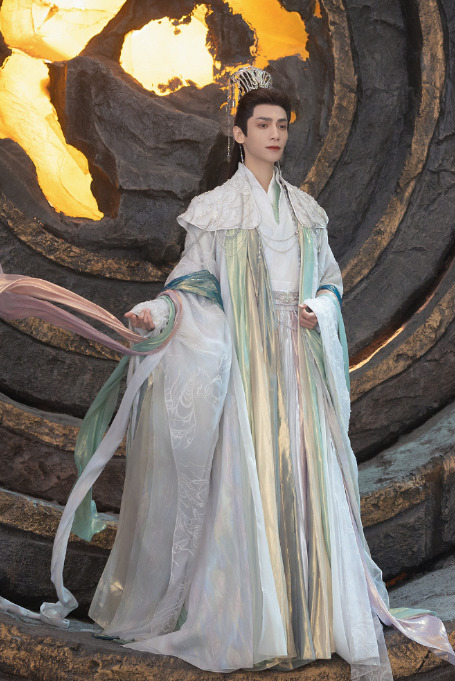
(9) Members of the Moon Tribe all wear long wavy hair, chunky metal and coin ornaments, and hair braiding.
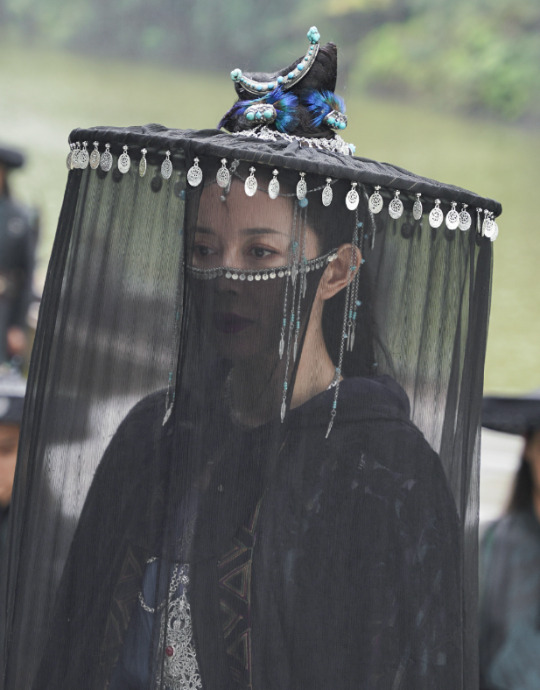

Tantai Jin follows the dress code when he stays with the Moon Tribe before entering the spiritual dimension.

Guess who also loves his wavy hair, metallic accessories, and leather? Of course it's the Ancient Devil God, again reminding viewers of his connection to the tribe.

Bonus: Luo Yunxi mentioned in an interview that his characters (hostage prince, emperor, Mingye, Devil Gods) all have different hairpieces/wigs. He had to take off and reglue his hair between scenes.
#till the end of the moon#luo yunxi#black moonlight holds the be script#cdrama#chang yue jin ming#chinese drama#tteotm#tantai jin#bai lu#ye xiwu#mingye#sangjiu
303 notes
·
View notes
Text

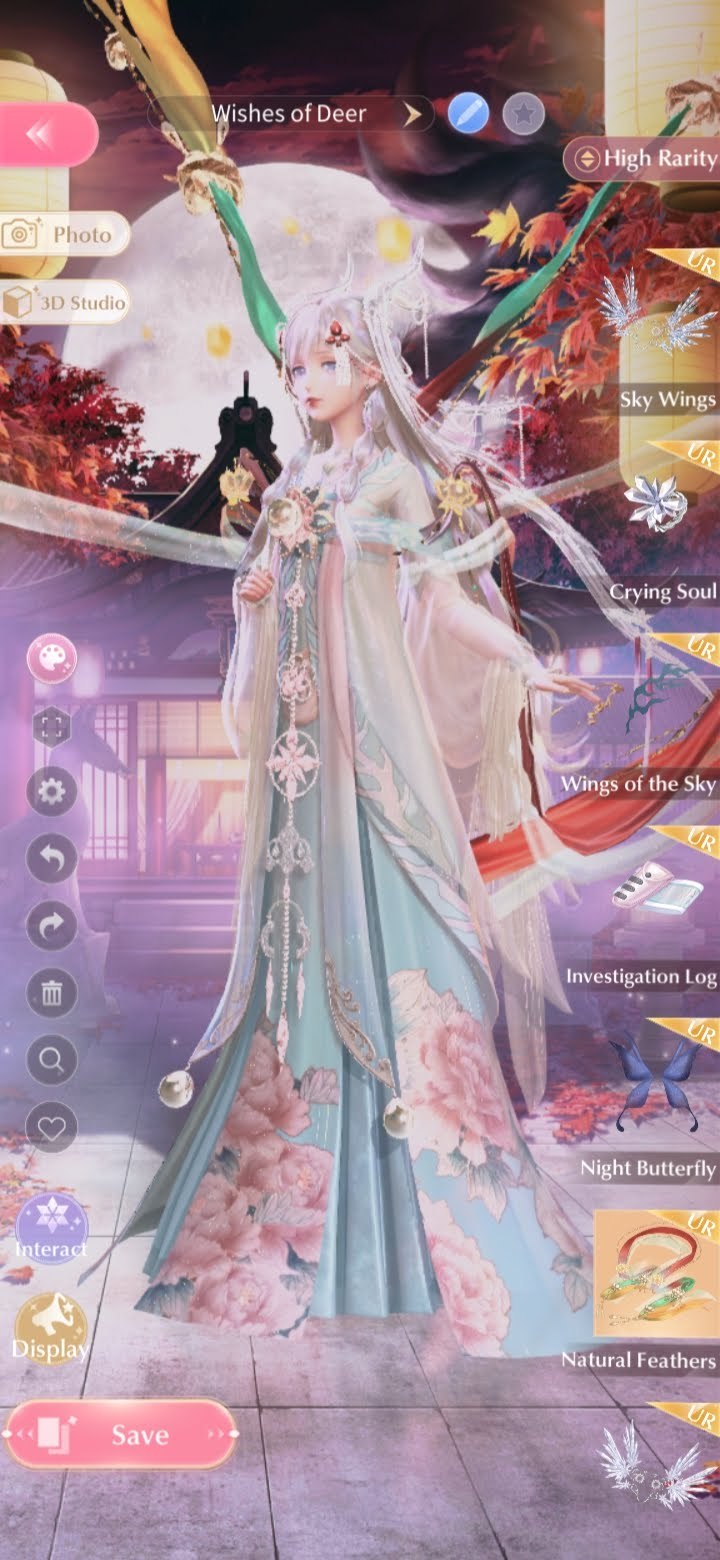



Playing around with Dunhuang Items
Tuesday, September 27th, 2022
#shining nikki#nikkiverse#shining nikki styling#my styling#sn styling#sn nikki#love nikki#dunhuang#sn dunhuang#sn lor river#sn north melody#sn wrenren dian#wrenren dian
9 notes
·
View notes
Text

OC art.
Character: Ban Yuwen (班雨雯)
he is my silly son hehe. The art style is inspired by the Dunhuang cave art.
#art#my art#digital art#fanart#original character#oc#hanfu#xianxia#dunhuang#wuxia#fresco painting#painting
83 notes
·
View notes